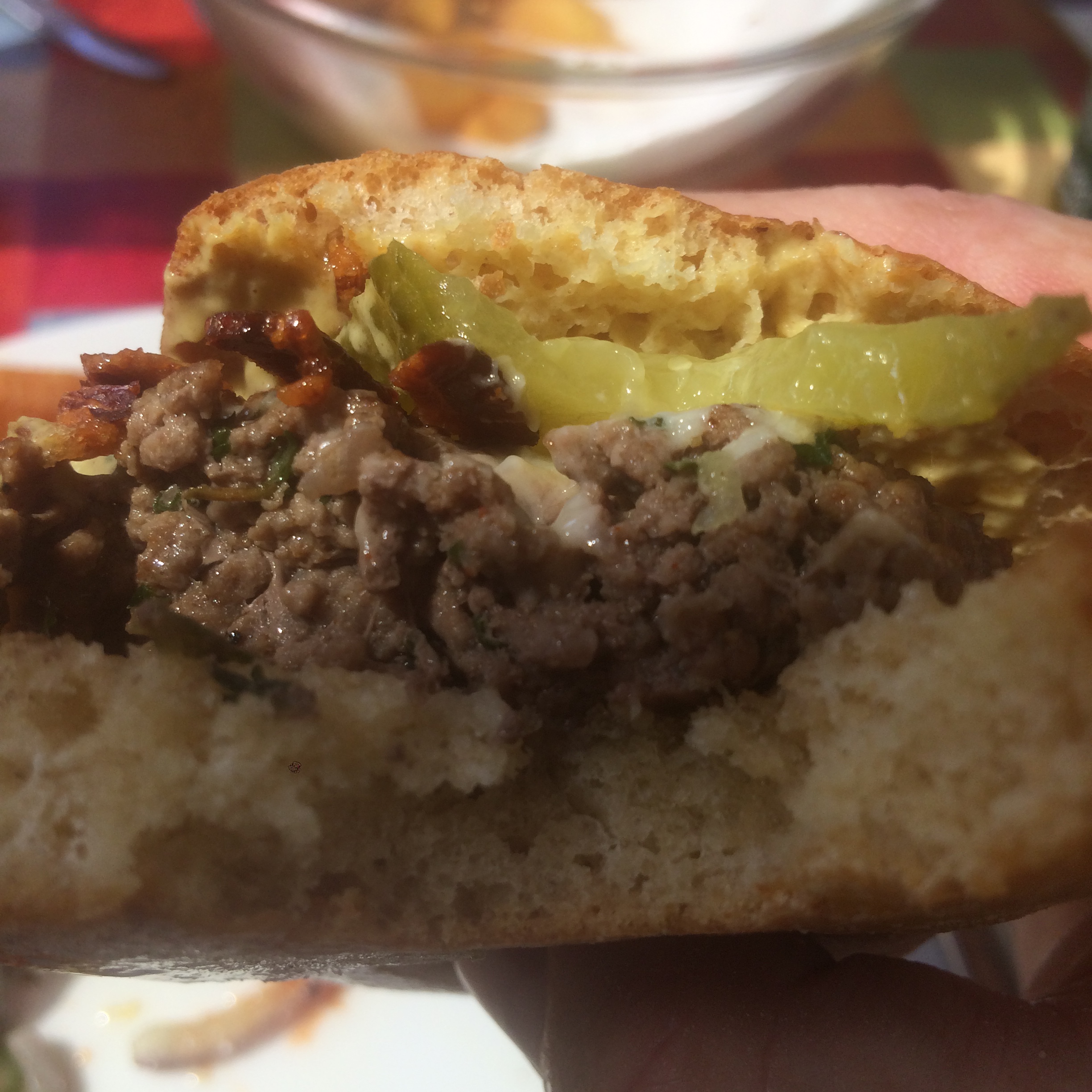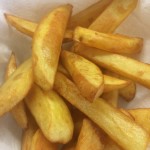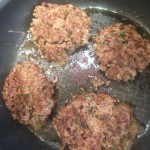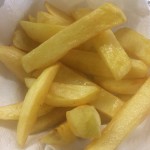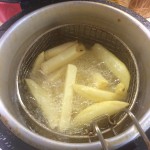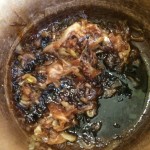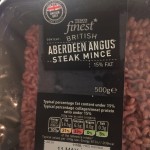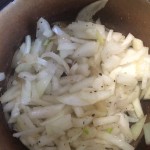Right, I’ll start by assuming you’ve already seen my recipes for triple cooked chips and caramelised onions, though the respective pages will tell you all you need to know. Here it’s the burger and accompaniments that warrant attention. Not that it’s exactly a great culinary art, but like almost anything done well it can taste brilliant.
First things first: you need quality raw materials. In this case I used Aberdeen Angus coarse steak mince from Tesco, though as anyone who knows me would tell you I’d much sooner get really good fresh, local beef through my local butcher. Ideally you could buy some rib-eye steak and mince it yourself, though many would call that a waste of perfect good steak! 15% fat is probably a good ratio though, given that the fat adds flavour and keeps the lean meat succulent.
So, you have your minced beef, but what to add to it? A little finely-chopped onion or shallot is always welcome, as is good sea salt and milled black pepper, but beyond that a touch of seasoning is down to your personal taste. In this case I added fresh parsley and thyme, cumin, smoked paprika, a slug of Worcester sauce and a small taster of garlic and chilli oil.
Thereafter Adam mixed the ingredients using two forks rather than fingers since handling, as with pastry, does indeed make the burgers tougher – keep it to a minimum. However, shaping by hand works if you don’t have one of those new fangled burger shaping devices.
Here’s secret no 1: put the burgers on a plate, brush lightly on both sides with oil, then cover the plate with cling film and leave it in the fridge for an hour or so. The patties need a good hour to chill and rest, and will then stay in shape far better.
Secret no 2: while a searing hot non-stick pan is essential to get the “crust” on a burger, cook them on a medium heat only. With really fresh meat leaving them medium rare is great, but with anything other you probably want to cook them through.
Secret no 3: as with almost any meat, the results will be more tender if you allow the burgers to rest for a minute or two before serving, ideally on a paper towel so any fat will absorb.
Now for the toppings. On this occasion I melted some grated cheddar – proper cheddar, not just the plastic processed cheese, plus some crisp-cooked streaky bacon that Adam chose to crumble and apply to the cheesy topping, using it to glue the burger together. You could try other cheeses, such as gruyère, stilton or others – experiment!
Did I mention bread rolls? We used proper rolls – Adam had a ciabatta roll and I chose a cheesy bread roll, but in both cases they had texture and flavour and were certainly no the horrible soft, sweet, cloying monstrosities fast food burger joints tend to sell.
Beyond that it’s down to your own personal choice of toppings and condiments, though in my case they were restricted to Dijon mustard, my own caramelised onions and some thin-sliced gherkin. However, I did dress the side salad and add ketchup to my tasty chips. So pick your own mix and enjoy the flavour of proper burgers – and cook your own next time rather than buying them in!

